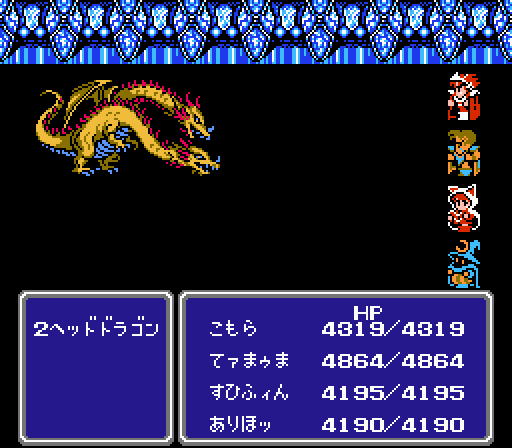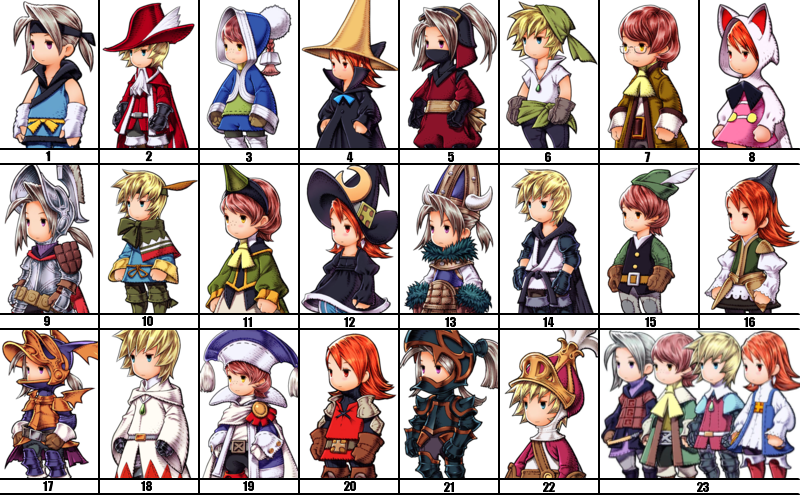Even though we didn't really get II & III until just recently in revamped forms, I think the first game was strong enough to provide a foundation to last until the SNES games came along. Although I've only played select entries in the series, I have completed the first game possibly more than any other game out there. There are fans that continue to devise interesting new challenges (e.g. single white mage playthrough) and people like me that just feel a need to play through it again every few years. A truly great accomplishment.
Final Fantasy Retrospective: The Famicom Years
Join PixlBit as we celebrate the 25th anniversary of Final Fantasy in style!
Final Fantasy III: Get a Job!


With Final Fantasy II in the books it was time to crank out another. A larger and more complex game than the previous two releases combined, development on Final Fantasy III took longer, with the game releasing in Japan in early 1990. Final Fantasy III was again headed up by the creative minds behind the first two games, and even though many people at Square were looking ahead to the 16 bit era, the core Final Fantasy team was so focused on completing their third game that the technology was literally passing them by. Again, the time frame between the Japanese releases of the first three games and the American release of the first Final Fantasy can be difficult to picture, but by the time the game was released in Japan all eyes were on the Super Famicom/Nintendo. There simply wasn’t enough time for the small company of Square Soft to localize such a big RPG for the aging NES.
If Final Fantasy II established that each game in the series could differ wildly from other Final Fantasy games, then FF III was the first example of the incremental evolution that each entry would include. This was the first game in the series to show changes in character hit points appear above their heads, and also finally fixed the problem of auto targeting. Before, if two characters were queued up to attack the same monster but that monster was killed by the first attack, the second character would still swing at the dead air, wasting a valuable turn. With Final Fantasy III, the second character would automatically move on to the next available target. These changes may sound small, but they went a long way to improving the user experience for the series as a whole.

Of course, the biggest change to the gameplay in Final Fantasy III was one that would have a lasting impact on the entire Final Fantasy franchise: the Job System. As the story of Final Fantasy III progressed, the player would unlock new classes or “jobs” as Square decided to call them. Players could tailor their party to their liking by changing their party member’s jobs from warrior into dragoon, black mage into white mage, and so on. Switching classes would consume Capacity Points, which were awarded after every battle along with experience points and gil. Using CP kept players from changing jobs at will, adding another layer of strategy to the game. As characters gained levels the amount of CP needed to change jobs decreased. There was also a benefit to changing to a similar job, like two melee jobs for example. Each job had special abilities and could equip specific armor and weapons, making Final Fantasy III a much larger game than the other Final Fantasy titles.

Final Fantasy III once again featured nameless blank slates for characters, but the game still did well with critics and fans alike, garnering a 36 in Famitsu and was another sales success for Square. Later on, a remake of the game was in the works for the Japan-only portable system the WonderSwan Color. Even though Final Fantasy I, II, and IV were eventually released for the little-known handheld, the remake of Final Fantasy III never made it, due to the vast number of sprites needed to show all the different jobs. Square never forgot about the game, however, and eventually Final Fantasy III made its way to the Nintendo DS handheld. This would be the first time people outside of Japan would get their hands on the game, as it was finally released in 2006. The DS remake was a complete 3D graphical overhaul with improved game mechanics (CP was eliminated completely) and a more involved story with named characters speaking dialogue.

The Famicom years for Final Fantasy were years of blisteringly fast development cycles, brisk sales, and the increasing confidence of the core creative team. Even though people in the West would ultimately have to wait many more years to experience the second and third games in the series, the first generation of Final Fantasy was extremely important and paved the way for what many people consider to be the golden age for the franchise: the Super Famicom years. Join us next time as we delve into the 16 bit era of a Fantasy that is anything but Final.




Comments